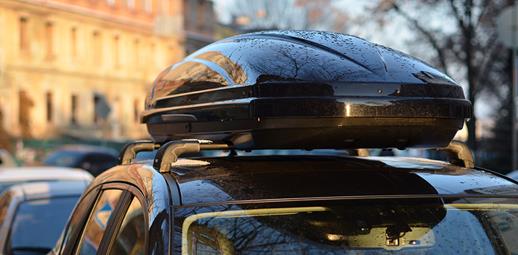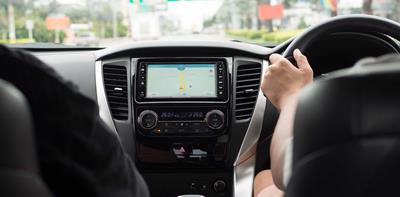
If you load up your car often and are running short on space, then it might be worth investing in a good quality roof box.
Roof boxes attach securely to a rack on top of your car and are great for carting around the likes of sleeping bags, suitcases, camping equipment or sports gear.
By making use of the space on your car’s roof, you can safely carry everything you need for a trip away, without having to overload the car or obstructing the driver’s view. You can also avoid filling the passenger seats, which could make everyone’s journey more comfortable.
You might even find that by investing in a roof box you can manage with a smaller, more affordable car than you might have had previously.
Choosing a roof box
It’s important to carefully pick the right roof box for you and your car - one that will be both safe and do the job intended. Here are a few things to consider:
Shape and size
Roof boxes come in a variety of shapes and sizes to suit different needs.
While they’re measured in litres, most retailers suggest that you pay more attention to the length and width of each box and consider what you’ll be using it for.
When it comes to choosing the right shape, consider both what you’ll put in your roof box and what else you may need to carry on your car. For example, narrow and medium-width boxes may leave enough space on your car to carry bikes or kayaks.
What it’s made of
You want your roof box to be sturdy and last for many years.
As well as potentially not lasting as long as sturdier boxes, cheaper roof boxes made from thin plastic can make for a noisy journey, as they can vibrate in the wind.
It may be a good long-term investment to buy one that is made of fibreglass or reinforced plastic, as it’s more likely to last longer and make for a smoother journey.
How it fits to your car
To use a roof box, you will need to have a roof rack in place. Apart from that, there are several different ways to attach roof boxes to cars. Before buying one, be sure that it is compatible with your roof rack system and easy for you to manage.
How it opens
One important practical consideration when choosing a roof box is how it opens. If you choose a side-opening box, you'll only be able to load or unload it from one side, as opposed to a dual opening or hinged roof box which could be easier to access.
Ready to buy a roof box?
There is a large selection of roof boxes on the market to suit different needs and budgets.
Expert Reviews compared roof boxes in June 2021 and rated Aldi’s Auto XS Roof Box (£100) as the best budget option. It described it as “simple, no frills”, although it noted it is on the smaller side at 240 litres.
The review site said that the “cavernous” Halfords Advanced Roof Box (£440) was the best for maximum storage, at 580 litres.
Using a roof box safely
Safe Driving for Life, an information resource produced in partnership with the Driver and Vehicle Standards Agency (DVSA), has some tips on using roof boxes and racks safely:
- Consider whether you actually need one: could you remove some of the gear from your boot and carry less in your car? Remember you should never overload your car, as this can be dangerous.
- Find out your car’s maximum permitted roof load, which will be in your vehicle handbook. Make sure you factor in the weight of the box itself too.
- Don’t load your roof with lots of heavy items: heavy equipment is best going in your boot, leaving lighter bulky items for the roof. Bear in mind that your vehicle will also have a maximum permitted axle weight.
- Read the instructions and fit the rack carefully: a badly fitted box could damage your car or come loose while you’re driving.
- Inspect your roof rack before each use: they endure a lot when on top of a car, so check for rust and rub some copper grease onto the mounts before you set off.
- Take care when loading the roof: ask someone to give you a hand, if you need it, or you could risk hurting yourself or scratching your car’s paintwork.
- On long trips, stop regularly to check that anything loaded on your roof – a box or otherwise – is still securely in place.
- Make sure your tyres are inflated to the correct pressure for the load your vehicle is carrying, using the ‘laden weight’ tyre pressures that will be in your vehicle handbook. Also bear in mind that the extra weight will mean your car will take longer to slow down, so make sure to keep a safe distance from other vehicles.
In addition, Green Flag has a useful tip for people who aren’t used to driving with the extra height on their roof: measure how tall your car is once everything is fitted on the roof. This tip could come in handy if you need to enter a height-restricted car park.

